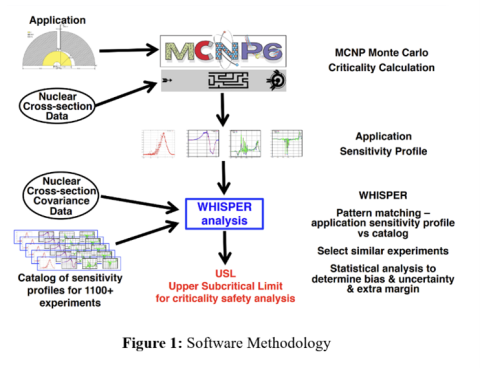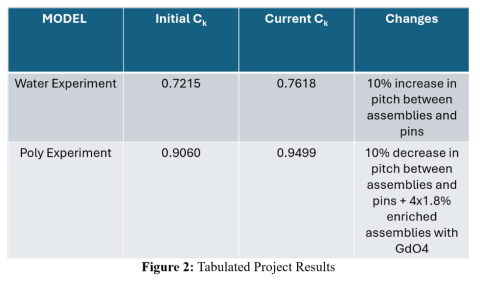The motivation for this project was spurred from findings of large nuclear data uncertainties associated with NuScale’s VOYGR small modular reactor (SMR) discovered by Universidad Politecnica de Mardid (UPM). Given that NuScale’s reactor is the first NRC approved Generation IV reactor design, this work is highly relevant to the current and future state of nuclear. The National Criticality Experiments Research Center (NCERC) team at Los Alamos National Lab plans on investigating this large uncertainty with the goal of a reduction through experimental procedures. Our work through MCNP reactor models and WHISPER analysis will assist the team at LANL conduct their experimental design.
Team: Gavin Ditmore, Jack Farrar, Nick Hefferle, Declan Willems
Project Advisors: Prof. Yaron Danon, Nick Thompson, Jesson Hutchinson

Members of the design group
Project Motivation
The motivation for this project was spurred from findings of large nuclear data uncertainties associated with NuScale’s VOYGR small modular reactor (SMR) discovered by Universidad Politecnica de Mardid (UPM). Given that NuScale’s reactor is the first NRC approved Generation IV reactor design, this work is highly relevant to the current and future state of nuclear. The National Criticality Experiments Research Center (NCERC) team at Los Alamos National Lab plans on investigating this large uncertainty with the goal of a reduction through experimental procedures. Our work through MCNP reactor models and WHISPER analysis will assist the team at LANL conduct their experimental design.

Software methodology
Project Description
In pursuit of the goal to reduce nuclear data uncertainty, this project aims to recreate the NuScale VOYGR reactor geometry on both a full and experimental scale through MCNP. Using the full-scale model as a baseline, experimental models to fit the constraints of the LANL COMET assembly (a critical experiment setup) can be developed. WHISPER, a post-processing tool, can be utilized to investigate and match nuclear data sensitivity profiles between the experimental and base model. Through an iterative process of adjusting the experimental model followed by a WHISPER analysis as shown in Figure 1, the sensitivity profiles can be improved creating an experimental model resemblant of the NuScale VOYGR to be applied in lab.

Tabulated project results
Results and Accomplishments
As stated in the description, the group fulfilled the goal of creating models of the full NuScale VOYGR module in addition to experimentally-scaled models in MCNP. In the experimental models, two were created, one with water and another with polyethylene to account for the NCERC’s bounds. From these models, their k¬eff were analyzed to be within an acceptable range. Once these were acceptable, the sensitivity profiles were gathered and ran through Whisper with the experimental models being compared to that of the full-scale reactor. The desired outcome to measure the accuracy between the models is called the correlation coefficient symbolized by ck. This coefficient is returned from a scale of 0.0 to 1.0 in which 0.0 has nothing similar and 1.0 is an exact same model. The group desired at least a ck of 0.95 for the experiment model to be acceptable. The results of these models and their respective ck values can be seen in Figure 2. From this figure, the poly model yielded acceptable results nearly at 0.95. The experimental model that utilized water yielded less favorable results, but was not completely necessary as LANL would most likely be conducting a polyethylene experiment.